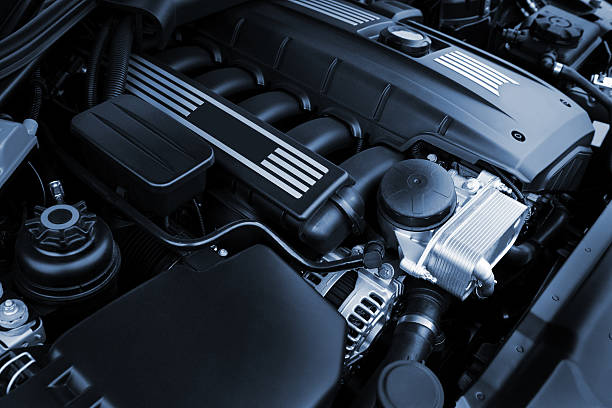Liquid-Cooled Ignition Systems: The Unsung Heroes of High-Performance Engines
In the realm of automotive engineering, where power and efficiency reign supreme, an unsung hero quietly revolutionizes the way high-performance engines operate. Liquid-cooled ignition systems, a cutting-edge technology that combines precision engineering with thermal management, are pushing the boundaries of what's possible in internal combustion engines. This innovation promises to redefine the landscape of automotive performance, offering a glimpse into the future of high-output powerplants.

The Genesis of Liquid-Cooled Ignition
The concept of liquid-cooled ignition systems emerged from the crucible of motorsport, where the relentless pursuit of performance drives innovation. Traditional air-cooled ignition systems have long been a limiting factor in high-output engines, struggling to maintain consistent spark energy under extreme conditions. As engineers pushed engines to their limits, they realized that controlling the temperature of the ignition components was key to unlocking further performance gains.
The first experiments with liquid-cooled ignition systems began in the early 2000s, with racing teams in Formula 1 and endurance racing leading the charge. These early systems were complex and expensive, but they showed immense promise in allowing engines to operate at higher boost pressures and rpm ranges without the risk of spark plug fouling or pre-ignition.
The Technology Behind the Innovation
At its core, a liquid-cooled ignition system integrates coolant channels into the spark plug itself, as well as the surrounding cylinder head area. This allows for precise temperature control of the spark plug tip, electrode, and insulator – critical components that are subjected to extreme heat and pressure during combustion.
The system typically employs a dedicated coolant circuit, separate from the engine’s main cooling system. This circuit uses a specialized coolant mixture designed to withstand the high temperatures and electrical conductivity present in the ignition environment. Advanced sensors and control systems monitor and adjust coolant flow in real-time, ensuring optimal spark plug temperature across all operating conditions.
Benefits Beyond the Racetrack
While liquid-cooled ignition systems were born on the racetrack, their benefits extend far beyond the world of motorsport. In high-performance road cars, these systems offer several key advantages:
-
Increased power output: By maintaining optimal spark plug temperature, liquid-cooled ignition systems allow for more aggressive ignition timing and higher compression ratios, translating to increased power output.
-
Improved fuel efficiency: The precise control of ignition conditions enables more complete combustion, leading to improved fuel efficiency – a critical factor in modern performance cars.
-
Enhanced reliability: By preventing spark plug overheating and fouling, liquid-cooled ignition systems contribute to improved engine reliability, even under extreme operating conditions.
-
Extended engine life: The ability to control combustion temperatures more precisely can lead to reduced thermal stress on engine components, potentially extending engine life.
Challenges and Future Developments
Despite their promise, liquid-cooled ignition systems are not without challenges. The complexity of the system adds cost and weight to the engine, factors that are particularly important in mass-market vehicles. Additionally, the integration of coolant channels into spark plugs requires advanced manufacturing techniques, further increasing production costs.
However, ongoing research and development are addressing these challenges. Engineers are exploring new materials and manufacturing processes to reduce costs and simplify production. Some companies are experimenting with alternative cooling methods, such as phase-change materials, which could offer the benefits of liquid cooling without the need for complex plumbing systems.
The Road Ahead: Integrating with Next-Generation Powertrains
As the automotive industry continues its march towards electrification, one might wonder about the relevance of advanced ignition technologies. However, experts believe that liquid-cooled ignition systems will play a crucial role in bridging the gap between traditional internal combustion engines and future powertrain technologies.
In hybrid powertrains, for example, where internal combustion engines are required to start and stop frequently and operate at varying loads, the precise control offered by liquid-cooled ignition systems could be invaluable. These systems could enable engines to operate more efficiently across a wider range of conditions, complementing electric motors and improving overall powertrain performance.
Moreover, as the industry explores alternative fuels such as hydrogen and synthetic fuels, the ability to precisely control ignition conditions becomes even more critical. Liquid-cooled ignition systems could be key to unlocking the potential of these future fuels in high-performance applications.
In conclusion, liquid-cooled ignition systems represent a significant leap forward in engine technology, offering a glimpse into the future of high-performance powertrains. As these systems continue to evolve and become more accessible, they promise to reshape our understanding of what’s possible in internal combustion engines, pushing the boundaries of performance, efficiency, and reliability. For automotive enthusiasts and engineers alike, the future of high-performance engines looks cooler than ever – quite literally.





